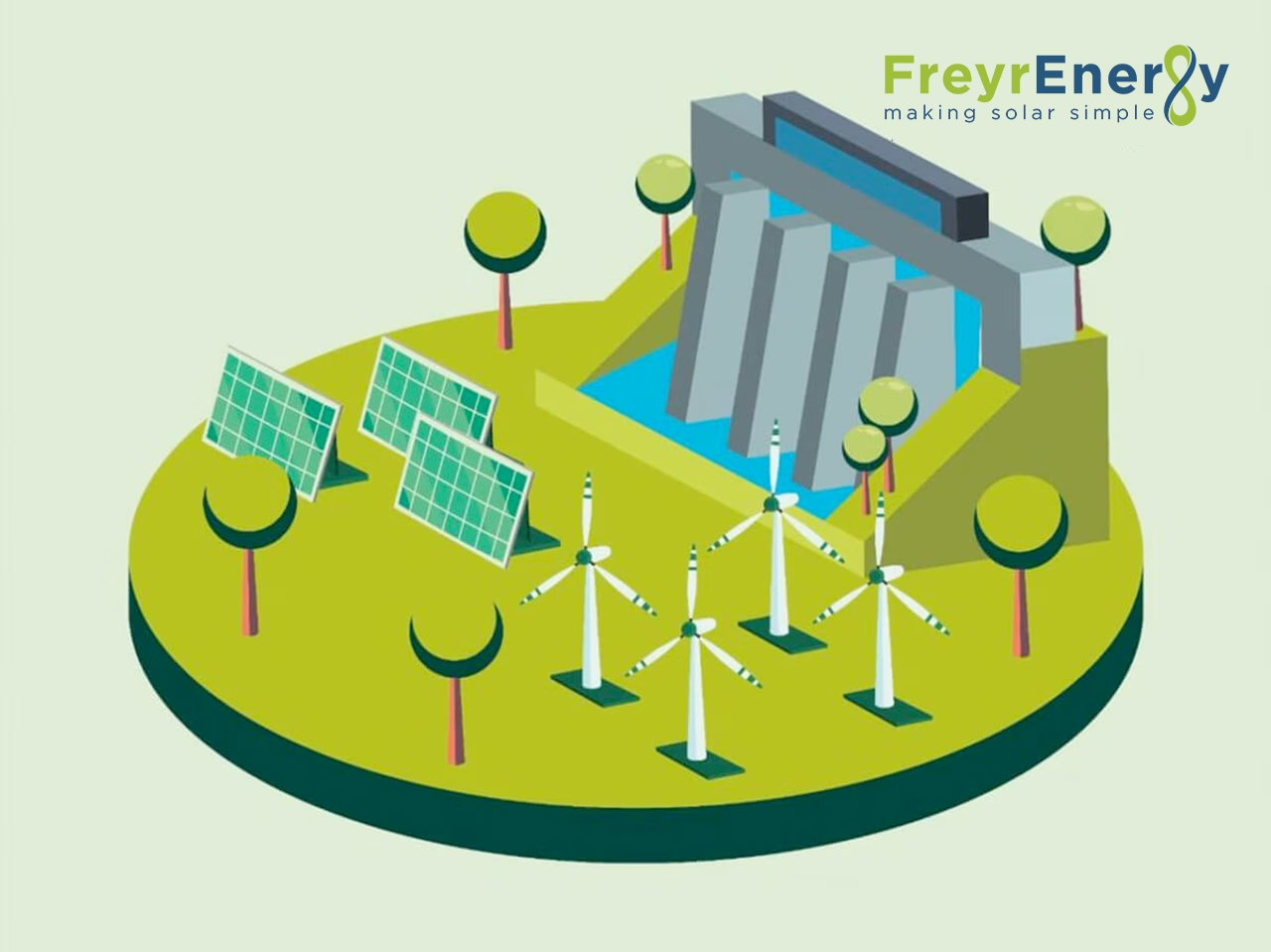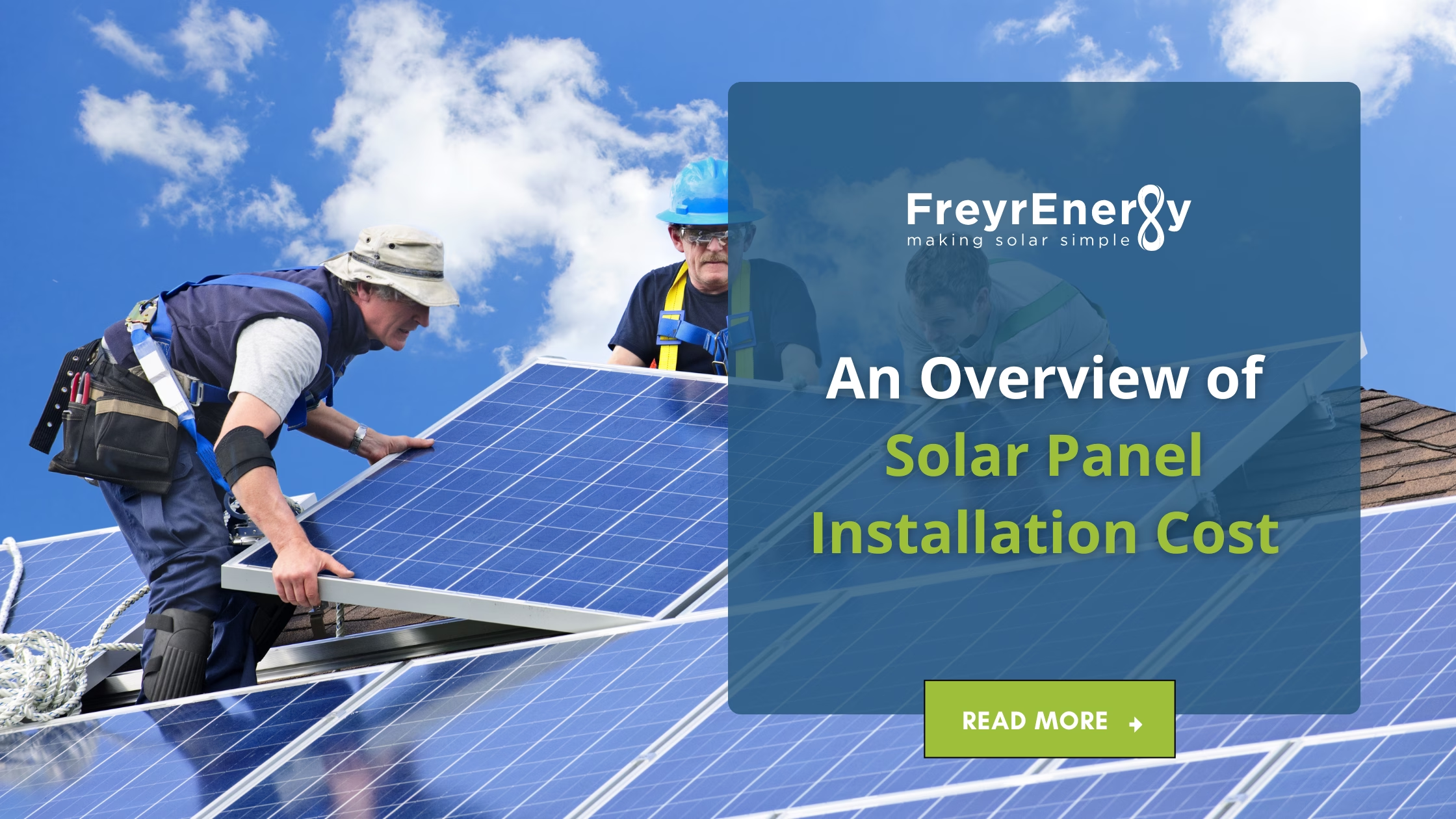Are you ready to embrace solar panel installation in your favourite city? Let’s explore the challenges and find bright solutions!
Solar panel installation has become increasingly popular among homeowners and businesses as the world transitions towards cleaner energy sources. India, a country with a growing population and expanding economy, has set ambitious targets to reduce its carbon emissions and shift towards renewable energy.
Freyr Energy has come up with solutions to provide top-quality products and services at affordable prices. It will be essential to help promote and meet India’s renewable energy targets.
For example, ensuring sustained power generation is critical to the success of clean energy projects, such as the recent first 24/7 solar-powered village project in India, Modhera, Gujarat.
Despite the challenges, installation of rooftop solar panels in urban areas can be a game-changer in India’s transition towards cleaner energy.
Let’s study, reflect, and explore the solar energy challenges and solutions to installing solar panels in urban areas next.

Solar Panel Installation Challenges
The solar panel installation challenges you must know are:
Limited Roof Space: In India, the push towards renewable energy sources like solar power has been gaining momentum, with rooftop solar panel installation being one of the most popular options. However, urban areas present unique challenges related to space availability limiting the number of solar panel installations.
Industries have been turning to open access mechanisms to deliver a higher share of green power. It allows consumers to purchase power from off-site renewable energy plants through existing utility transmission systems.
In Mumbai alone, rooftop solar installation in residential buildings can generate up to 1,300 MW, industrial can generate 223MW, and others 71MW. It means it can cut down electricity demand by 50%.
As India continues to pursue its renewable energy goals, it is clear that innovative solutions like open access mechanisms will play a critical role in promoting solar power panel installation and expanding access to green power sources.
While challenges like limited space availability persist, Freyr Energy offers solutions that give 30% ROI on every purchase for residential solutions to drive India’s transition towards cleaner, more sustainable energy sources.
Shading: Yet another major challenge for rooftop solar plant installation in urban areas is the potential for shading. It occurs when tall buildings, trees, or other structures cast shadows on the panels, reducing efficiency.
Shading loss can result from self-shading, where one row of solar panels casts a shadow on another row, horizon shading from surrounding terrain, and factors such as panel orientation and soiling.
It’s important to note that shading can cause a proportional decline in the power output of a rooftop solar panel system. The energy flow between solar cells in a panel shadows itself when even a portion is covered in shadow resulting in a reduction in energy generation.
Therefore, when installing rooftop solar panels, it’s essential to consider the impact of shading and take steps to minimize it for maximum efficiency.
High Upfront Costs: Solar power is a great way to reduce your carbon footprint and save money on electricity bills. However, the cost of solar panel installation can be a significant investment, which may deter many potential users from switching to solar energy. Luckily, solar subsidies, financing options, and others make solar energy more affordable.
The cost of solar panel installation can vary depending on factors like the type of installation, equipment, and solar panels used. Typically, the cost ranges from Rs 80,000 and up, depending on the system size. However, larger installations may cost more. Despite the initial investment, solar panel installation can save money in the long run by reducing your electricity bills and carbon footprint.
Before installing a rooftop solar panel, it’s essential to set a budget for the installation. Doing so lets you choose the equipment that best fits your needs and budget. Opting for mid-range products may be advisable, as they strike a balance between affordability and quality.
Overall, solar subsidies offered by the government can help make solar energy more accessible and affordable for everyone. With the right budget and equipment, you can enjoy the benefits of solar power while contributing to a more sustainable future.
Solar Panel Installation Solutions
Do you know the latest solar panel problems and solutions? Here are a few:
Innovative Design: One solution to consider is the elevated design structure. This design structure is for high-rise structures and offers an innovative approach to maximizing the power output of solar panels. By elevating solar panels to a height of 6 to 8 feet above the ground, more sunlight and increasing solar panel efficiency.
What’s more, an innovative sun tracker and panel movement system using hydraulic mechanisms can ensure the panels are always facing the sun for maximum power generation.
Moreover, the dual-axis tracker can significantly increase energy generation by tracking the sun’s rays from different directions, allowing the solar panel to rotate in all directions. This project uses a simple dual-axis solar tracker system powered by Arduino and equipped with servo motors, stepper motors, raindrop sensors, temperature and humidity sensors, and an LCD.
Investing in solar panels can be costly, but maximizing their efficiency is a smart long-term investment. With this innovative solution, you can generate more solar power using minimal space and with minimal maintenance.
Microinverters: Microinverters are small inverters installed under each solar panel on the roof. It means that each solar panel has its micro inverter, allowing it to operate independently.
Microinverters have several advantages over string inverters. Firstly, they can comply with new electrical codes that require rapid solar system shutdown in case of emergency.
Microinverters are suitable for challenging solar power installation conditions, such as solar panels facing multiple angles or shading issues from trees or chimneys. They also have a longer lifespan than standard inverters and come with a 25-year warranty. Microinverters also can track the production of each panel, making panel-level monitoring possible.
Hence, for residential areas, microinverters can be an excellent option for maximizing the energy output of your rooftop solar panels.
Community Solar: Community solar projects offer a fantastic opportunity for people who want to harness the benefits of solar energy without the installation of rooftop solar panels.
These projects serve multiple households and businesses by sharing the electricity generated by a single large solar power plant. Unlike residential solar installations, usually measured in kilowatts, community solar projects can produce megawatts of energy enough to power hundreds or thousands of homes.
By subscribing to or purchasing a share of a community solar project, everyone can enjoy the perks of solar energy while paying less for electricity. This approach makes solar energy accessible to more people, regardless of whether they own a home.
Government Incentives: The solar subsidy can greatly reduce the cost of installing solar systems, making it more affordable for homeowners and businesses to switch to renewable energy.
The Indian government offers solar subsidies for 1kW, Rs. 14,588 provided across the states like Telangana, Andhra Pradesh, Maharashtra, Madhya Pradesh, and more.
These subsidies can significantly affect the upfront costs of installing solar systems, encouraging more people to embrace sustainable energy solutions.
Conclusion
The Indian government has pledged to reduce the emissions intensity of its GDP by 45% by 2030 and to generate half of its energy needs from non-fossil fuels by the same year.
One of the acute challenges is the reliability of India’s power grid in cities, which reduces the need for backup sources like diesel generators. It results in a lack of interest in rooftop solar panels, often imported, expensive, and not worth the investment for individual households.
Now the question arises, are you tired of not having access to all the relevant and accurate information about solar energy in one place? Have you faced hidden costs and a lack of transparency in your solar energy journey?
Well, Freyr Energy Solar App is here to solve all your solar energy problems and solutions! Our solar panel monitoring app is the best solar app in India. It provides you with all the necessary information and resources from our knowledge centre to assess your solar energy requirements and generate a quote instantly.
So, to make the most out of solar energy, download the Freyr Energy Solar App today and experience the best solar app in India.
Frequently Asked Questions
Yes, you can install solar panels for apartments in India, but it may require special permission from the building owner or management.
To maximize solar panel efficiency in an urban area with shading, consider using micro-inverters or power optimizers to optimize energy production from each panel.
Yes, subsidies are available for solar panel installation in many states.
Community solar projects allow multiple households or businesses to share the benefits of a single solar installation, making it more cost-effective for all involved.
To find a reliable solar panel installer, do your research, check reviews and ratings, and ask for recommendations from Freyr Energy Experts.



